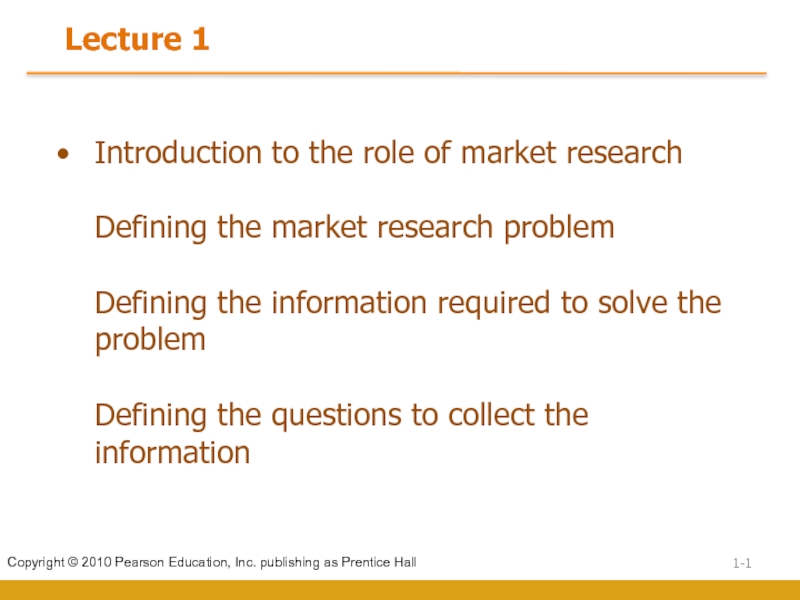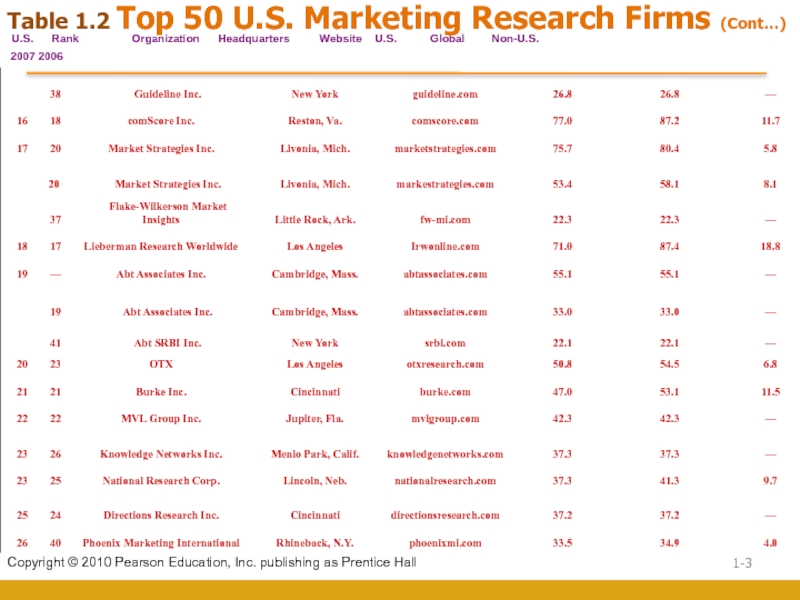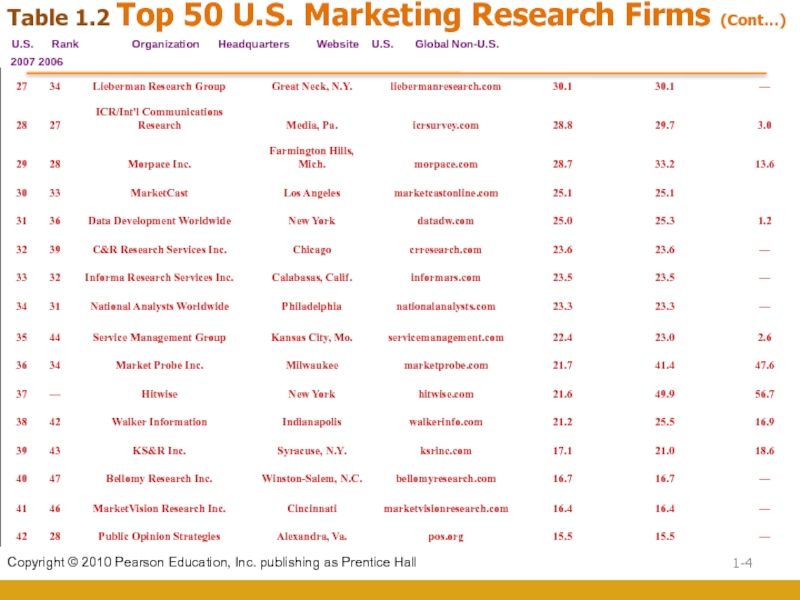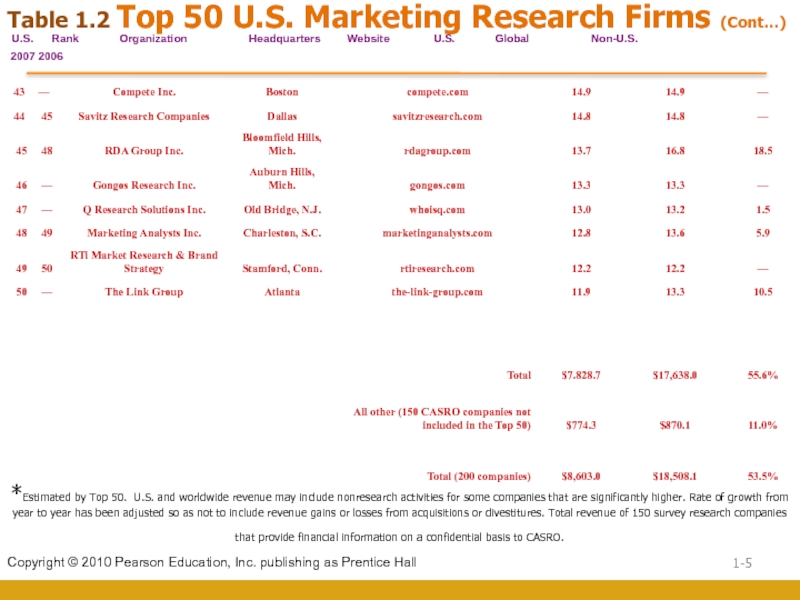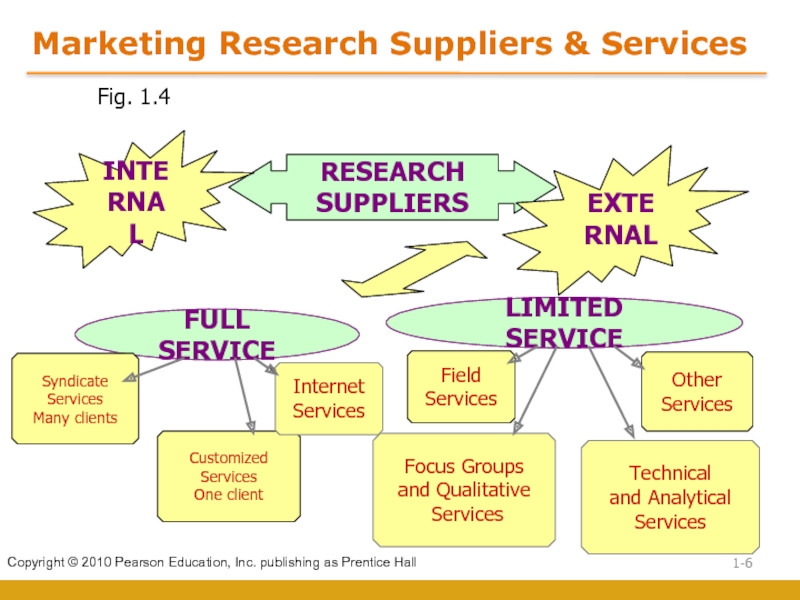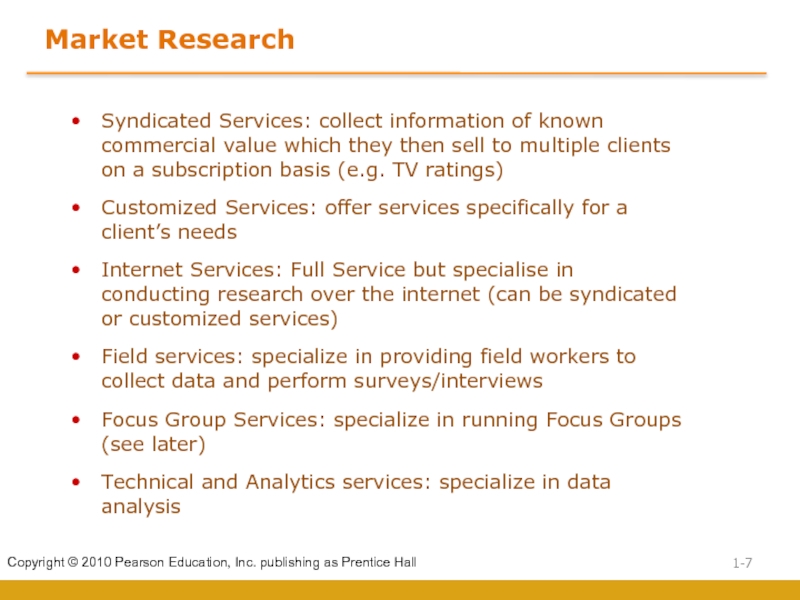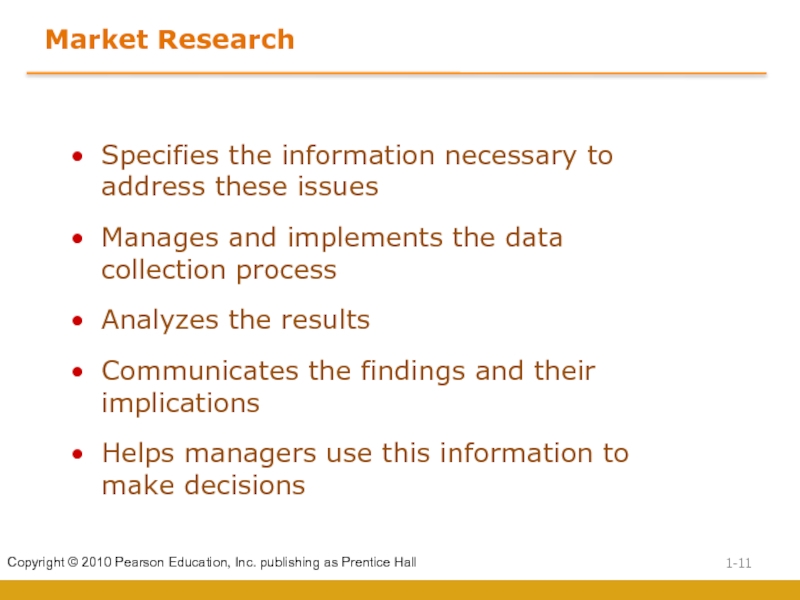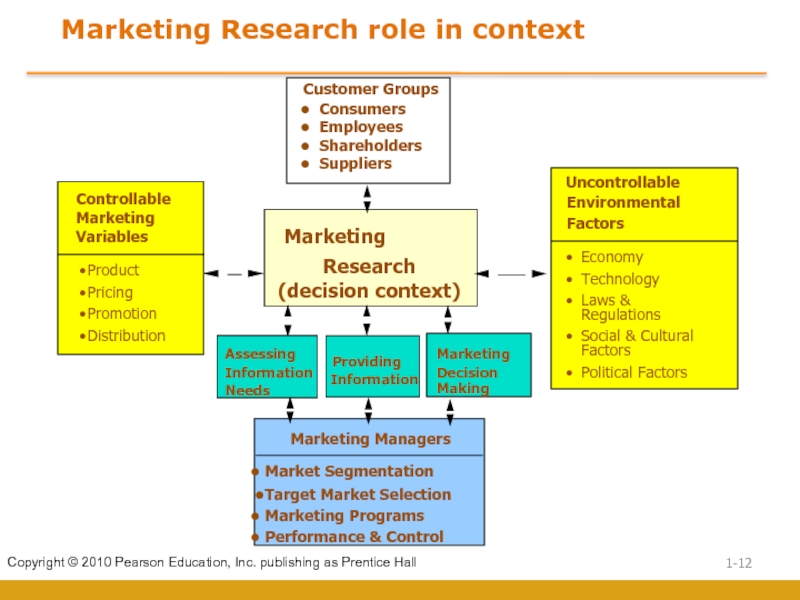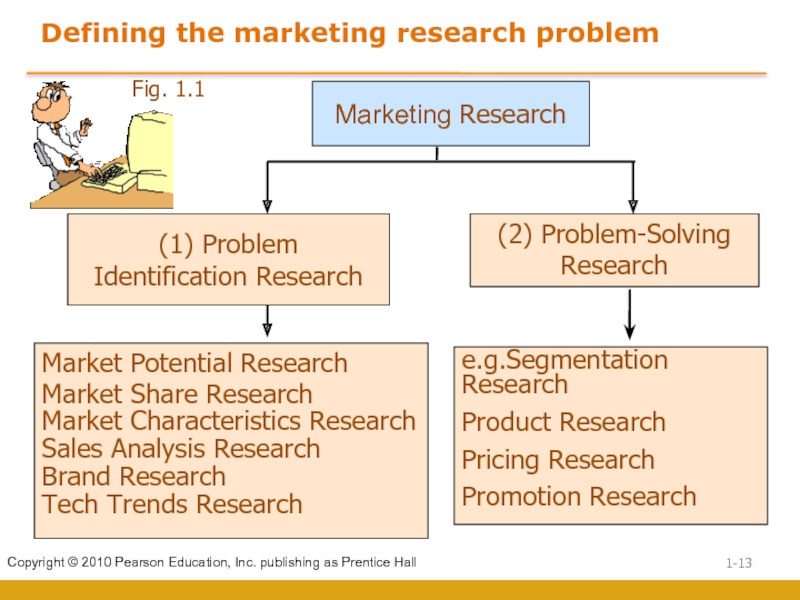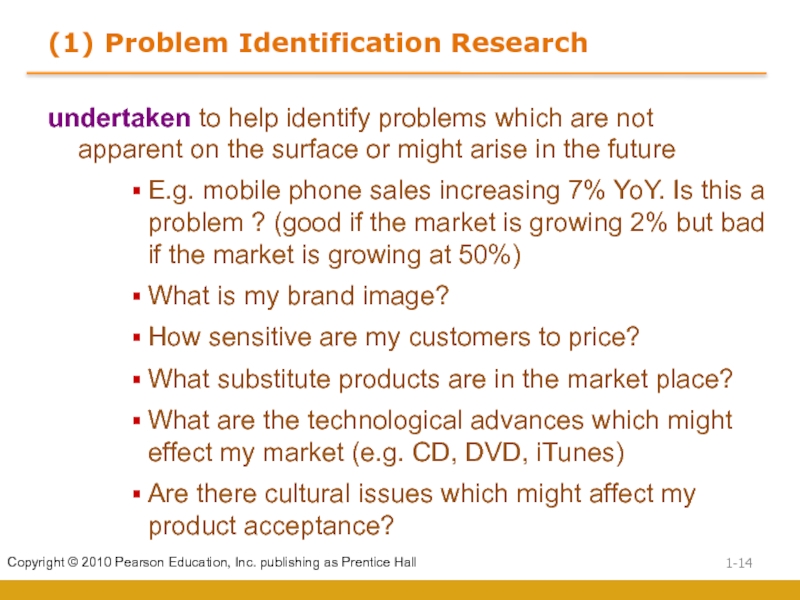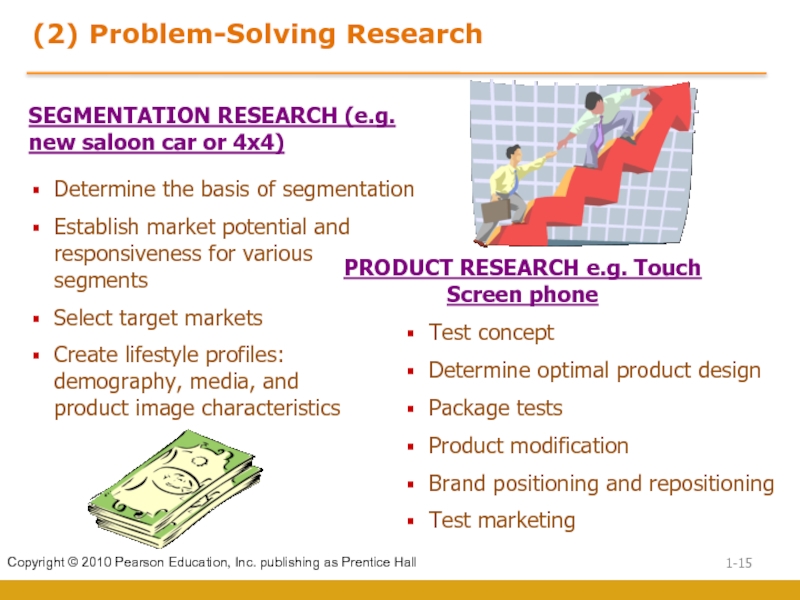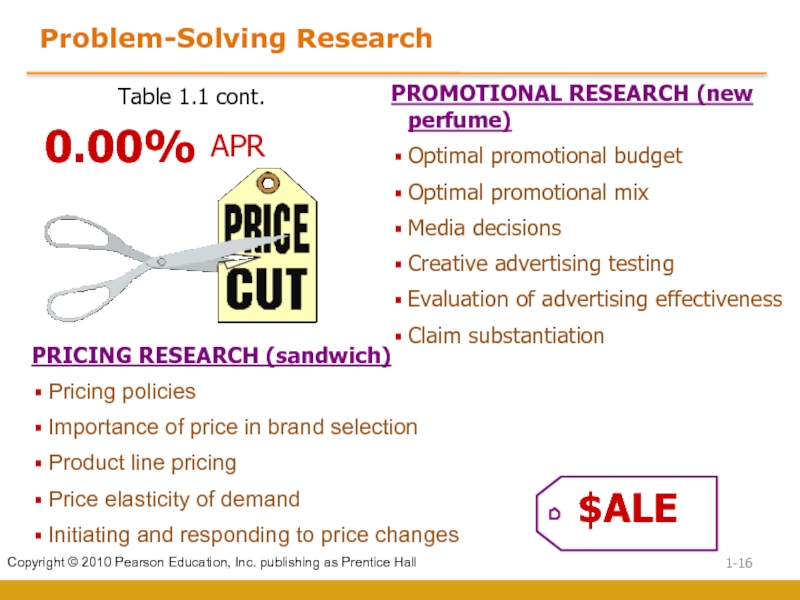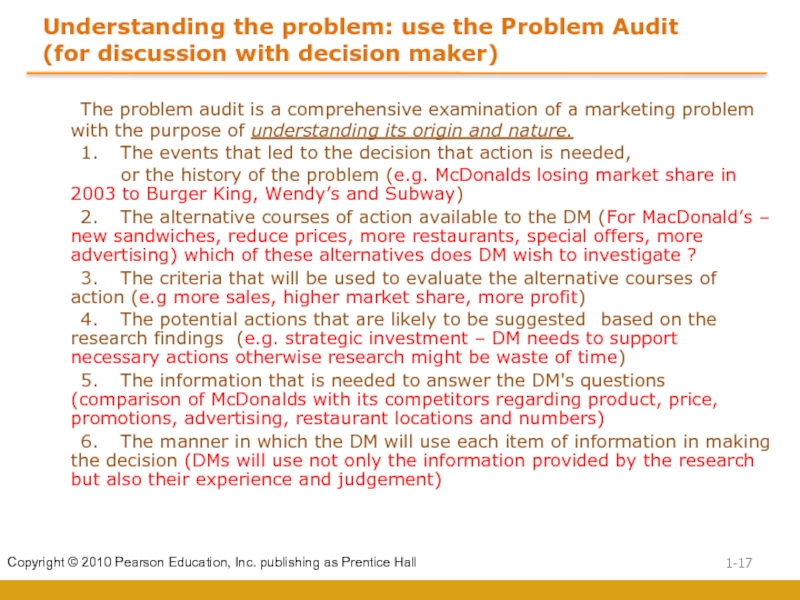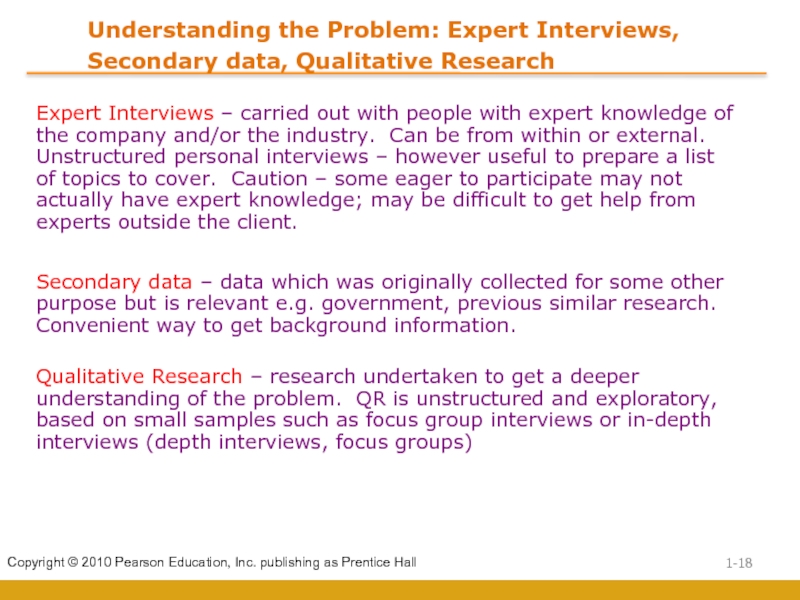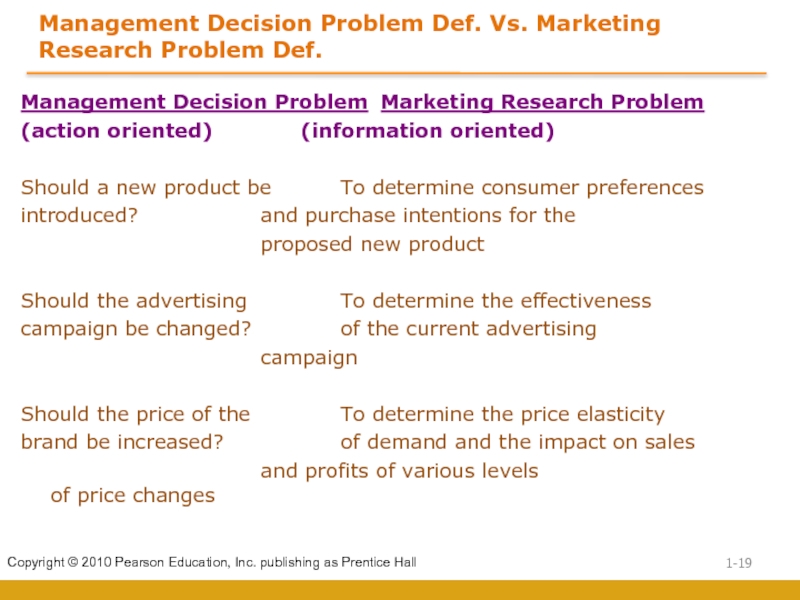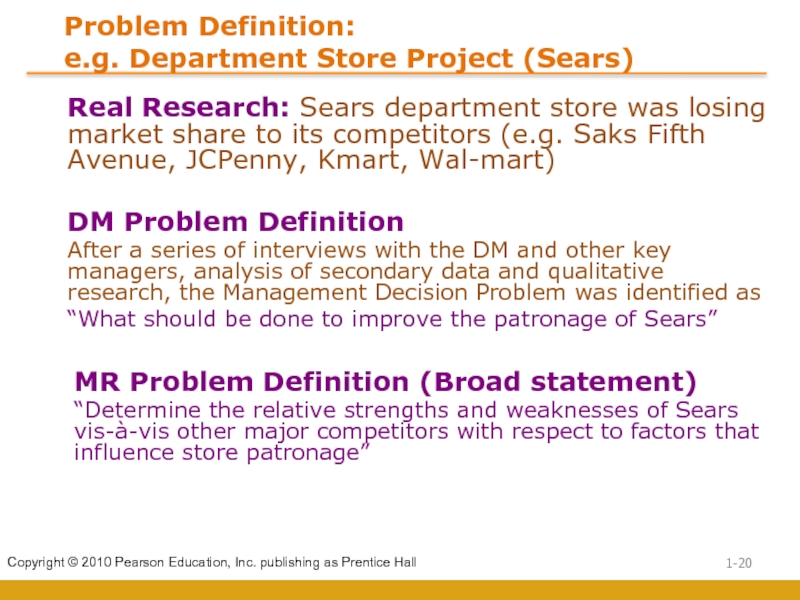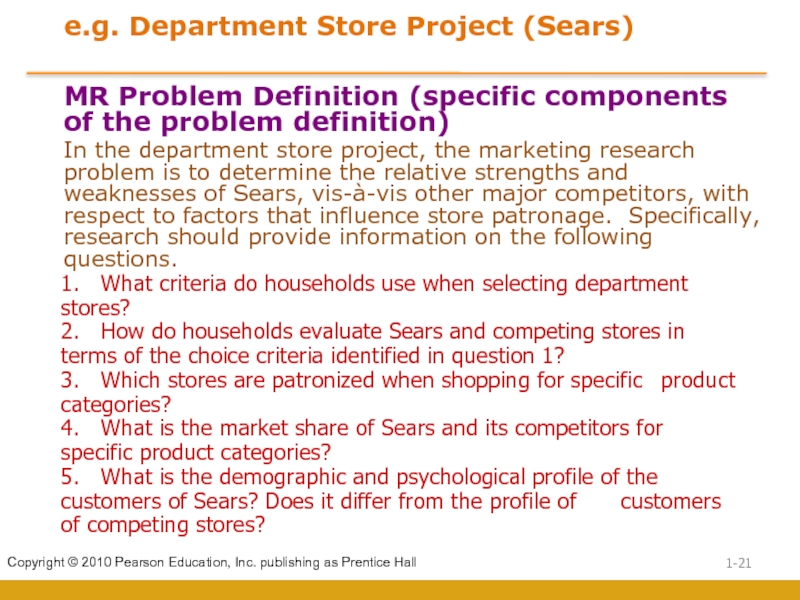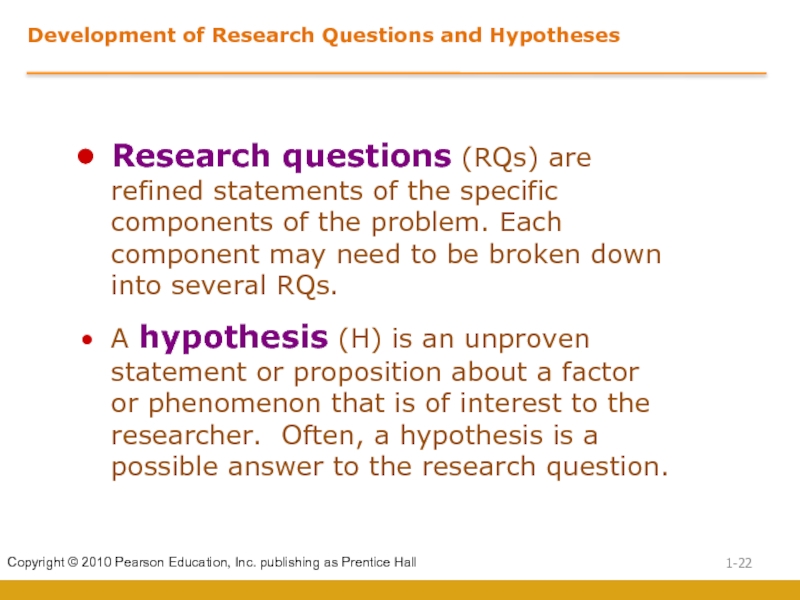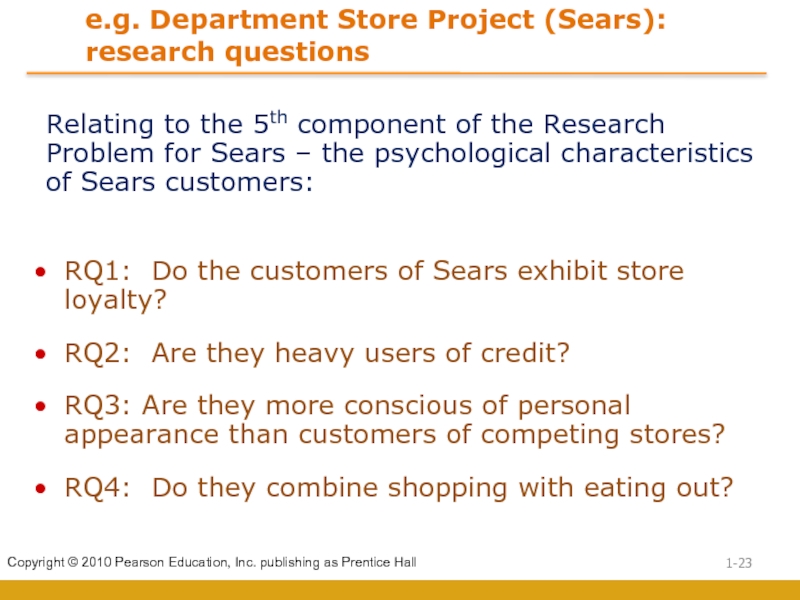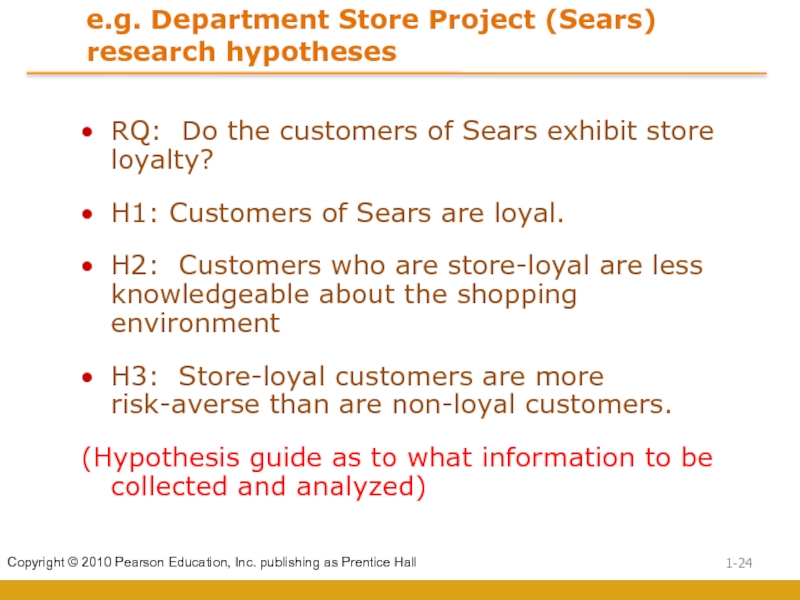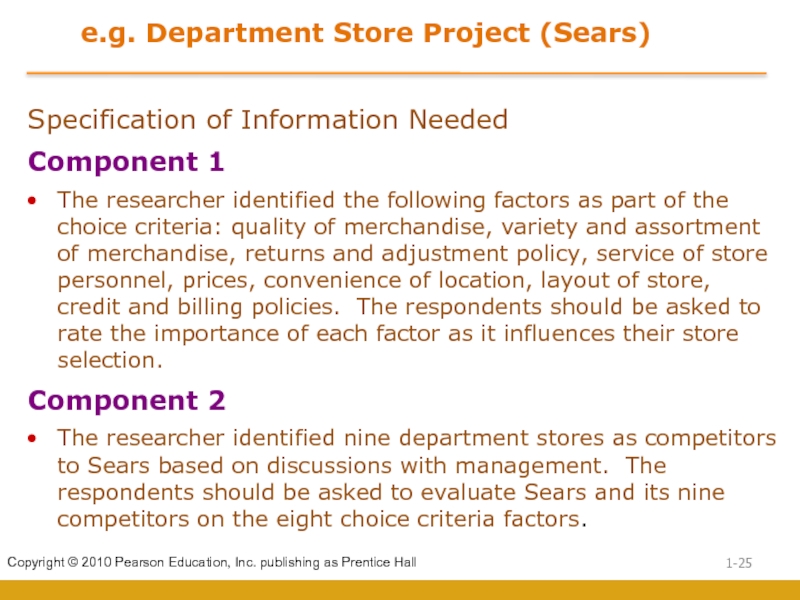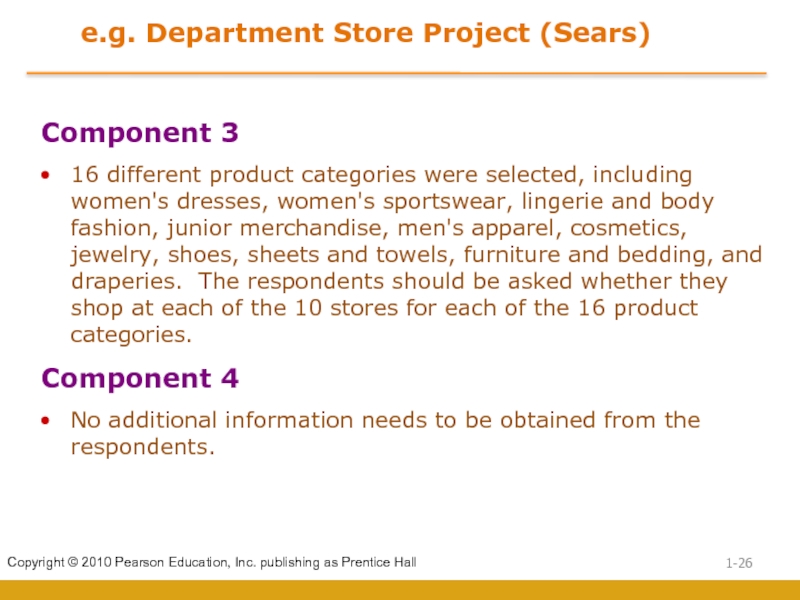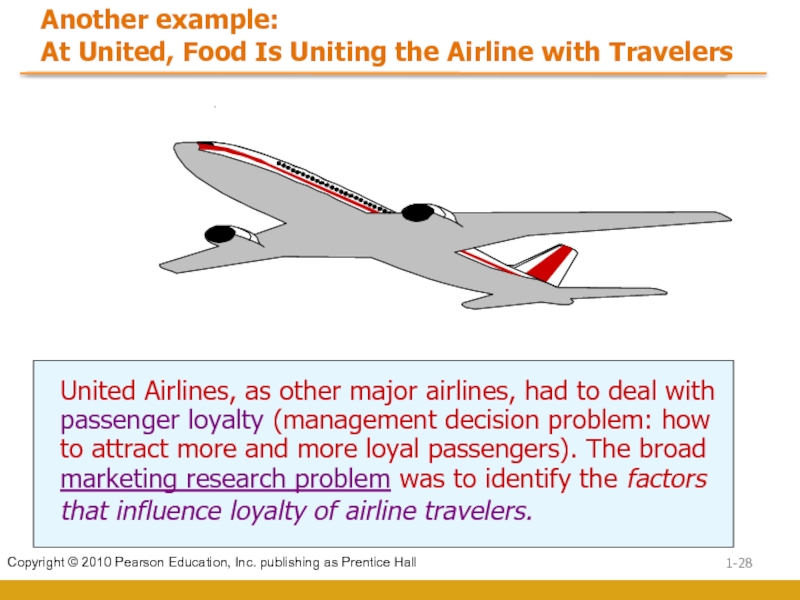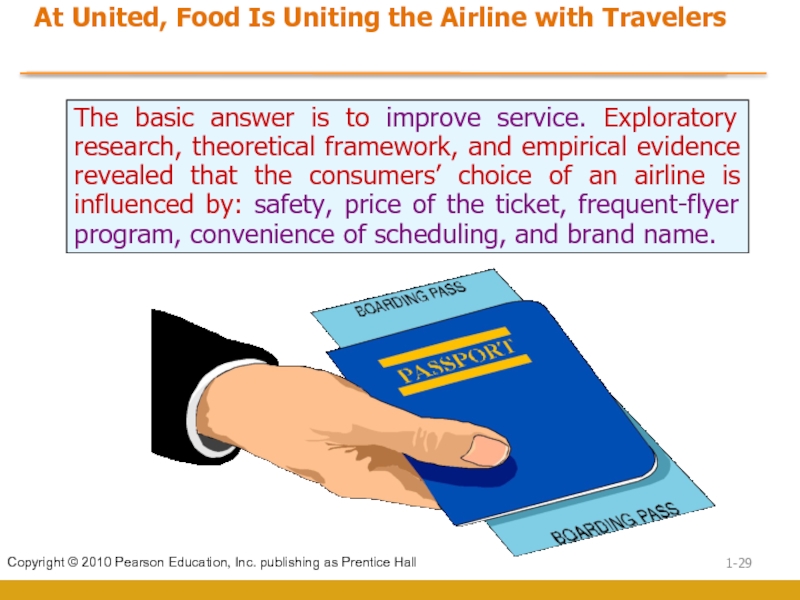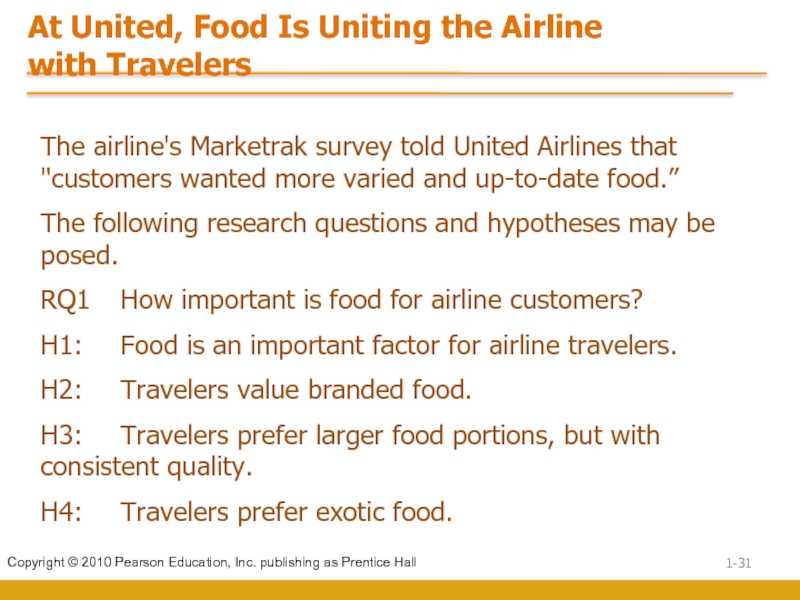Lecture 1
- Главная
- Разное
- Дизайн
- Бизнес и предпринимательство
- Аналитика
- Образование
- Развлечения
- Красота и здоровье
- Финансы
- Государство
- Путешествия
- Спорт
- Недвижимость
- Армия
- Графика
- Культурология
- Еда и кулинария
- Лингвистика
- Английский язык
- Астрономия
- Алгебра
- Биология
- География
- Детские презентации
- Информатика
- История
- Литература
- Маркетинг
- Математика
- Медицина
- Менеджмент
- Музыка
- МХК
- Немецкий язык
- ОБЖ
- Обществознание
- Окружающий мир
- Педагогика
- Русский язык
- Технология
- Физика
- Философия
- Химия
- Шаблоны, картинки для презентаций
- Экология
- Экономика
- Юриспруденция
Lecture 01. Introduction to the role of market research презентация
Содержание
- 1. Lecture 01. Introduction to the role of market research
- 3. Table 1.2 Top 50 U.S. Marketing Research Firms (Cont…)
- 4. Table 1.2 Top 50 U.S. Marketing Research Firms (Cont…)
- 5. Table 1.2 Top 50 U.S. Marketing Research
- 6. Marketing Research Suppliers & Services
- 7. Market Research Syndicated Services: collect information of
- 8. Domestic AAPOR : American Association for Public Opinion
- 9. Marketing Research Associations Online
- 10. Definition of Marketing Research Role Marketing research
- 11. Market Research Specifies the information necessary to
- 12. Marketing Research role in context
- 13. Defining the marketing research problem
- 14. (1) Problem Identification Research undertaken to help
- 15. (2) Problem-Solving Research
- 16. Problem-Solving Research
- 17. Understanding the problem: use the Problem Audit
- 18. Understanding the Problem: Expert Interviews, Secondary data,
- 19. Management Decision Problem Def. Vs. Marketing Research
- 20. Problem Definition: e.g. Department Store Project (Sears)
- 21. e.g. Department Store Project (Sears) MR Problem
- 22. Development of Research Questions and Hypotheses Research
- 23. e.g. Department Store Project (Sears): research questions
- 24. e.g. Department Store Project (Sears) research hypotheses
- 25. e.g. Department Store Project (Sears) Specification of
- 26. e.g. Department Store Project (Sears) Component 3
- 27. e.g. Department Store Project (Sears) Component 5
- 28. Another example: At United, Food Is Uniting the Airline with Travelers
- 29. At United, Food Is Uniting the Airline with Travelers
- 30. At United, Food Is Uniting the Airline with Travelers
- 31. The airline's Marketrak survey told United Airlines
- 32. At United, Food Is Uniting the Airline with Travelers
Слайд 1Introduction to the role of market research Defining the market research problem Defining
Слайд 5Table 1.2 Top 50 U.S. Marketing Research Firms (Cont…)
*Estimated by Top
Слайд 7Market Research
Syndicated Services: collect information of known commercial value which they
Customized Services: offer services specifically for a client’s needs
Internet Services: Full Service but specialise in conducting research over the internet (can be syndicated or customized services)
Field services: specialize in providing field workers to collect data and perform surveys/interviews
Focus Group Services: specialize in running Focus Groups (see later)
Technical and Analytics services: specialize in data analysis
Слайд 8Domestic
AAPOR : American Association for Public Opinion Research (www.aapor.org)
AMA : American Marketing Association
ARF : The Advertising Research Foundation (www.amic.com/arf)
CASRO : The Council of American Survey Research Organizations (www.casro.org)
MRA : Marketing Research Association (www.mra-net.org)
QRCA : Qualitative Research Consultants Association (www.qrca.org)
RIC : Research Industry Coalition (www.researchindustry.org)
Marketing Research Associations Online
Слайд 10Definition of Marketing Research Role
Marketing research is the systematic and objective
identification
collection
analysis
Dissemination (sharing)
and use of information
For the purpose of improving decision making related to the
Identification(1) and solution (2) of problems and opportunities in marketing
Слайд 11Market Research
Specifies the information necessary to address these issues
Manages and implements
Analyzes the results
Communicates the findings and their implications
Helps managers use this information to make decisions
Слайд 14(1) Problem Identification Research
undertaken to help identify problems which are not
E.g. mobile phone sales increasing 7% YoY. Is this a problem ? (good if the market is growing 2% but bad if the market is growing at 50%)
What is my brand image?
How sensitive are my customers to price?
What substitute products are in the market place?
What are the technological advances which might effect my market (e.g. CD, DVD, iTunes)
Are there cultural issues which might affect my product acceptance?
Слайд 17Understanding the problem: use the Problem Audit (for discussion with decision
The problem audit is a comprehensive examination of a marketing problem with the purpose of understanding its origin and nature.
1. The events that led to the decision that action is needed,
or the history of the problem (e.g. McDonalds losing market share in 2003 to Burger King, Wendy’s and Subway)
2. The alternative courses of action available to the DM (For MacDonald’s – new sandwiches, reduce prices, more restaurants, special offers, more advertising) which of these alternatives does DM wish to investigate ?
3. The criteria that will be used to evaluate the alternative courses of action (e.g more sales, higher market share, more profit)
4. The potential actions that are likely to be suggested based on the research findings (e.g. strategic investment – DM needs to support necessary actions otherwise research might be waste of time)
5. The information that is needed to answer the DM's questions (comparison of McDonalds with its competitors regarding product, price, promotions, advertising, restaurant locations and numbers)
6. The manner in which the DM will use each item of information in making the decision (DMs will use not only the information provided by the research but also their experience and judgement)
Слайд 18Understanding the Problem: Expert Interviews, Secondary data, Qualitative Research
Expert Interviews –
Secondary data – data which was originally collected for some other purpose but is relevant e.g. government, previous similar research. Convenient way to get background information.
Qualitative Research – research undertaken to get a deeper understanding of the problem. QR is unstructured and exploratory, based on small samples such as focus group interviews or in-depth interviews (depth interviews, focus groups)
Слайд 19Management Decision Problem Def. Vs. Marketing Research Problem Def.
Management Decision Problem Marketing
(action oriented) (information oriented)
Should a new product be To determine consumer preferences
introduced? and purchase intentions for the
proposed new product
Should the advertising To determine the effectiveness
campaign be changed? of the current advertising
campaign
Should the price of the To determine the price elasticity
brand be increased? of demand and the impact on sales
and profits of various levels of price changes
Слайд 20Problem Definition:
e.g. Department Store Project (Sears)
Real Research: Sears department store was
DM Problem Definition
After a series of interviews with the DM and other key managers, analysis of secondary data and qualitative research, the Management Decision Problem was identified as
“What should be done to improve the patronage of Sears”
MR Problem Definition (Broad statement)
“Determine the relative strengths and weaknesses of Sears vis-à-vis other major competitors with respect to factors that influence store patronage”
Слайд 21e.g. Department Store Project (Sears)
MR Problem Definition (specific components of the
In the department store project, the marketing research problem is to determine the relative strengths and weaknesses of Sears, vis-à-vis other major competitors, with respect to factors that influence store patronage. Specifically, research should provide information on the following questions.
1. What criteria do households use when selecting department stores?
2. How do households evaluate Sears and competing stores in terms of the choice criteria identified in question 1?
3. Which stores are patronized when shopping for specific product categories?
4. What is the market share of Sears and its competitors for specific product categories?
5. What is the demographic and psychological profile of the customers of Sears? Does it differ from the profile of customers of competing stores?
Слайд 22Development of Research Questions and Hypotheses
Research questions (RQs) are refined statements
A hypothesis (H) is an unproven statement or proposition about a factor or phenomenon that is of interest to the researcher. Often, a hypothesis is a possible answer to the research question.
Слайд 23e.g. Department Store Project (Sears):
research questions
RQ1: Do the customers of Sears
RQ2: Are they heavy users of credit?
RQ3: Are they more conscious of personal appearance than customers of competing stores?
RQ4: Do they combine shopping with eating out?
Relating to the 5th component of the Research Problem for Sears – the psychological characteristics of Sears customers:
Слайд 24e.g. Department Store Project (Sears)
research hypotheses
RQ: Do the customers of Sears
H1: Customers of Sears are loyal.
H2: Customers who are store-loyal are less knowledgeable about the shopping environment
H3: Store-loyal customers are more risk-averse than are non-loyal customers.
(Hypothesis guide as to what information to be collected and analyzed)
Слайд 25e.g. Department Store Project (Sears)
Specification of Information Needed
Component 1
The researcher identified
Component 2
The researcher identified nine department stores as competitors to Sears based on discussions with management. The respondents should be asked to evaluate Sears and its nine competitors on the eight choice criteria factors.
Слайд 26e.g. Department Store Project (Sears)
Component 3
16 different product categories were selected,
Component 4
No additional information needs to be obtained from the respondents.
Слайд 27e.g. Department Store Project (Sears)
Component 5
Information should be obtained on the
We will look at the Sears questionnaire and the survey data gathered in more detail later in the course
Слайд 31The airline's Marketrak survey told United Airlines that "customers wanted more
The following research questions and hypotheses may be posed.
RQ1 How important is food for airline customers?
H1: Food is an important factor for airline travelers.
H2: Travelers value branded food.
H3: Travelers prefer larger food portions, but with consistent quality.
H4: Travelers prefer exotic food.
At United, Food Is Uniting the Airline
with Travelers
